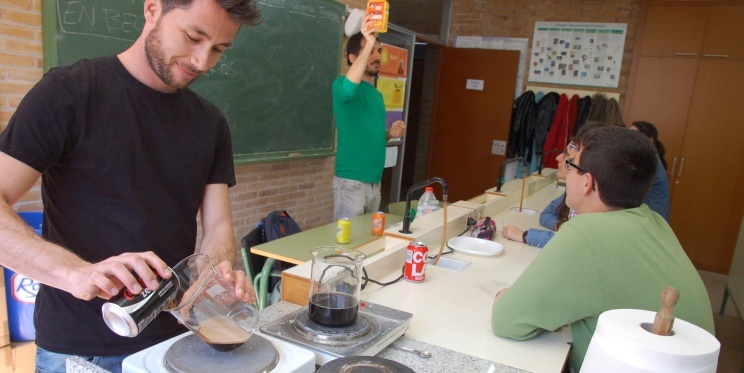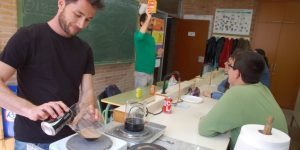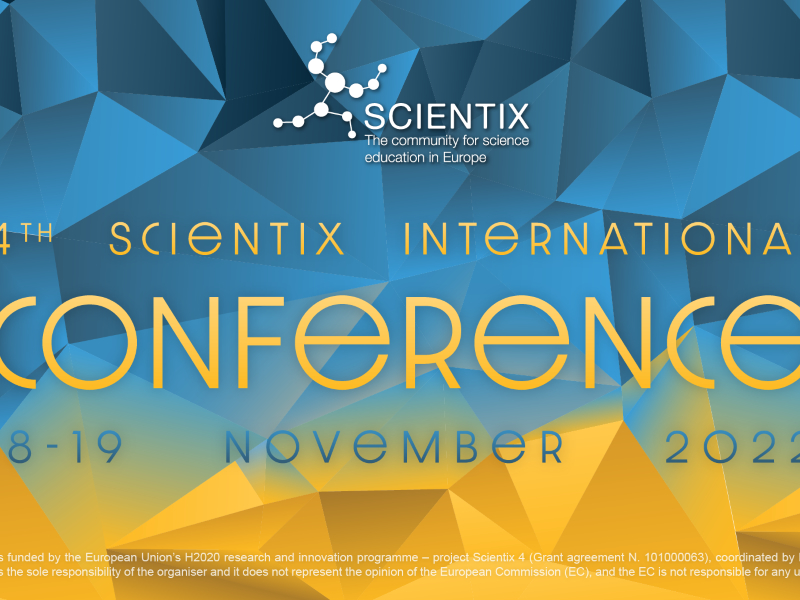STE(A)M pedagogical innovation projects in Barcelona


The CEB (Barcelona Education Consortium) is an instrument of co-management and decentralization, within a framework of institutional collaboration, which represents the will of the Generalitat of Catalonia and the Barcelona City Council to work together to improve services in school education and citizenship through a single educational network. Our project partners from Colectic spoke with Susana Navarro Jiménez, a leader of educational innovation programmes in the STE(A)M and sustainability areas of the CEB, and Rosanna Fernandez, director of the innovation, programmes and training area on the strategic lines and STEAM initiatives that are promoted in the city of Barcelona.
- How do you work in STEAMCat projects on technologies for learning and knowledge?
The STEAMcat pedagogical innovation programme is an educational programme promoted by the Department of Education, which lasts for three years. This programme is deployed throughout the Catalan territory and, from the Barcelona Education Consortium, 8 centres participate, finishing this course after having participated for three years.
Also, in the city of Barcelona, there are other educational programmes and proposals framed in the STE(A)M field. These are of different duration and intensity, aimed at different educational stages and promoted by different entities. The supply has increased considerably during the last three years, as well as the demand from educational centers.
- Does the STE(A)M approach have to be transversal or have a specific specialization?
From the CEB, we consider that the ideal situation is to work in a transversal and global way, taking advantage of contextualized and real situations to work on Sciences, Technology, Engineering, Arts and Mathematics.
Competency learning aims for the student to be able to apply their knowledge to solve problems and challenges in different contexts of their life. Situations are never closed to a single field of knowledge, but the solutions to them are the result of different fields of knowledge. Helping our students to use their knowledge in a holistic way, under the benefit that it is global and multi-factorial, is one of the objectives of competency learning.
Along these lines, one of the main advantages of working on STE(A)M in a transversal way is that students can experience how they work in real life to respond to the challenges posed by science and technology: all projects of this nature They are developed from the work of a multidisciplinary team members that complement each other. The basis of their work is cooperation and knowledge sharing with the aim of achieving the same goal.
- What are the successes of the STE(A)M community in Barcelona? Can you comment on some indicators and challenges?
A few years ago subjects in schools were worked on separately, and it was not proposed to work collaboratively between the different disciplines. Many institutions, entities, administrations and universities began to offer new ways of learning through STE(A)M, but these arrived in a disorderly way and without coherence. From the CEB we saw the need to channel the offer, to analyze the needs, to take advantage of resources and to share language and meanings with the different institutions and administrations involved. For this reason, monthly meetings were organized with the different agents, to build a map of the city and create a global STEAM action plan.
The demand for educational centres has increased exponentially, and that is why our goal is to offer proposals based on real needs, such as working on scientific vocations in earlier stages, which is when vocations are defined.

- Are there training actions aimed at teachers who want to work on STE(A)M?
Yes. From the Department of Education there is a STE(A)M training line that began more than 10 years ago. To highlight the CTM training (Sciences, Technology and Mathematics) that was born with the aim of working the STE(A)M in a transversal way and by projects. The teachers of the Barcelona Education Consortium, as part of the Education Department, also had the option of taking this 3-year training. It could be said that the CTM training was the starting point for the design and implementation of many other training courses in this field of knowledge.
At the CEB there are two lines of STE(A)M training offer that stand out: one has to do with the fact that most of the educational programmes of the Consortium’s unified call for programmes offer training to the teachers responsible for implementing them in the classrooms. One of the areas of the unified call for programmes is the STE(A)M area, which today has an offer of 10 educational programmes for primary, middle and secondary schools. At the same time, the resource centres of the city of Barcelona offer training centres included in the STE(A)M field and tailored according to the needs and PEC of the educational center.
- How do Pedagogical Resource Centres work, and how do STE(A)M skills such as robotics, digital manufacturing, social networks or technological sovereignty work?
The main objective of the pedagogical resource centers is to accompany the educational centers in their improvement process towards the educational transformation of the centers. For years, digital culture seminars have been carried out in which robotics, collaborative work and the use of mobile devices have been worked on.
Also from the CRPs, programs such as the Science Congresss, aimed at primary school and where the focus is placed on scientific methodology and on the student body as the protagonist, have been energized. The key to this programme is the accompaniment of the teaching staff by the CRP technicians, as well as the link with the scientific community.
- What is the pedagogical programme of the Manufacturing Athenaeums aimed at students and teachers?
The objective of the Educational Program of Manufacturing Athenaeums is to bring digital manufacturing closer to students and teachers through the use of it to solve real needs in their environment, focusing on the learning, design and manufacturing process rather than on the product.
Projects are developed that put into practice creativity, research, experimentation and meaningful learning for both students and teachers. It is committed to being interdisciplinary, offering students the opportunity to go from idea to object applying curricular content from different areas and personal and learning competencies that promote school success, educational innovation, technological competence and professional guidance.
- How do you imagine STE(A)M to be worked on in educational centres in the future?
We imagine that the centres work in a holistic and real way, therefore we would probably no longer talk about STE(A)M. The trend is work by skills, and not by subjects.
by Colectic


